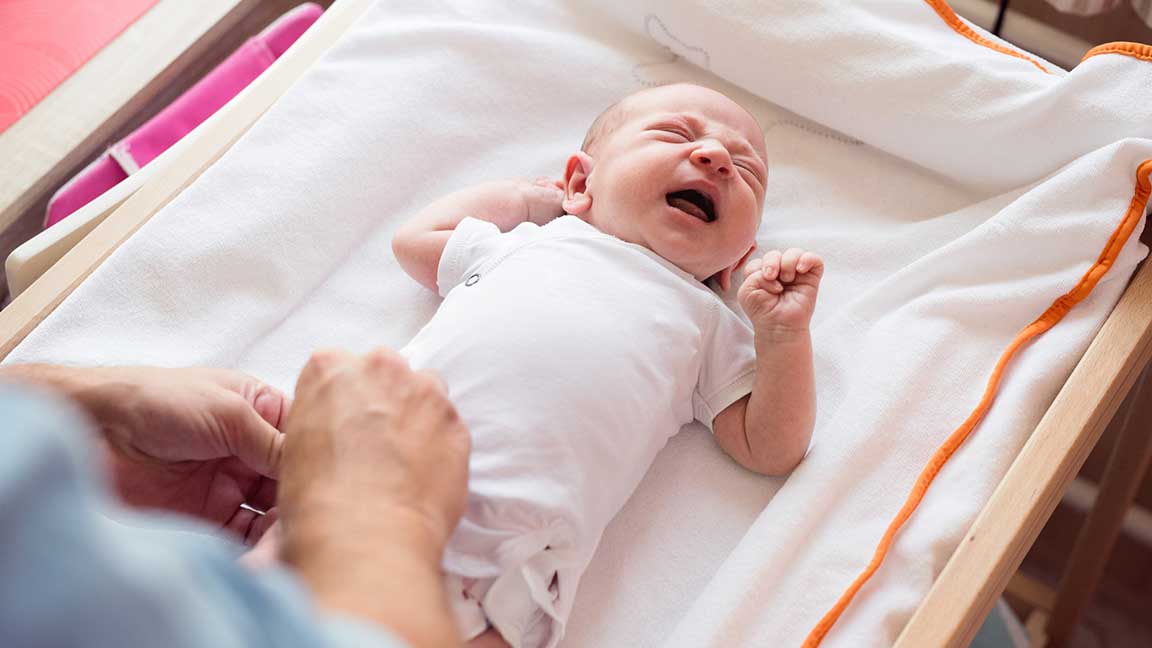If you’re a parent, you’re probably all too familiar with the signs of diaper rash.
The American Academy of Pediatrics says half of all babies between four and 15 months will develop the telltale redness and irritation in their diaper area every two months.
But is treating diaper rash as simple as spreading a barrier cream on your little one’s bottom?
Dr. Jill Aiken, a pediatrician at Tidelands Health Pediatrics on Holmestown Road in Myrtle Beach, says that’s usually the case, although not always.
“In most instances, parents can treat diaper rash at home using a zinc oxide cream from the store and changing their baby’s diaper more often,” she says. “If it’s the typical irritant diaper rash caused by prolonged contact with a wet diaper, it should resolve quickly from standard ointments and getting more air to the diaper area.”
But if skin redness persists despite treatment, you may need to treat the rash differently, she says.
“With severe diaper rashes, you won’t see an improvement using that approach. It may hang around for several days and not get any better,” she says.
Severe rashes
Lingering diaper rash can be caused by a yeast such as Candida. In that case, Dr. Aiken says you’ll see a bright red rash in the folds of the legs, on the labia or near the scrotum where the skin touches. You may also notice satellite lesions outside of the area of intense redness. These very distinct, tiny red bumps mean you’ll need to treat the rash with an antifungal cream.
An over-the-counter cream that treats athlete’s foot or vaginal yeast infections can also work on a diaper rash caused by yeast, Dr. Aiken says.
Get air to the diaper area
Yeast loves to grow in dark, damp places like your baby’s diaper area, says Dr. Aiken.
“When it gets really hot, it can increase the growth of Candida. Letting your baby go without a diaper is a great approach to take if you are able,” she says.
Placing a washable blanket down in a playpen is a good way to allow your baby to go without wearing a diaper for short periods, she says. Of course, be sure to supervise your child at all times.
Using cloth diapers may also be helpful, she says.
“If you’re having issues, a cloth diaper can make a difference,” she says. “If you can’t find a disposable diaper that works, cloth can be a good alternative to allow more airflow to the area.”
Don't rub off cream
Dr. Aiken says parents should allow barrier creams to remain on baby’s skin during diaper changes. Creams such as Desitin or A&D are intended to stay on the skin. By rubbing them off with a wipe when cleaning your child, you can actually irritate baby’s skin.
“Instead of scrubbing the cream off, blot it with a damp cotton cloth or a wipe that doesn’t have a lot of chemicals or fragrance in it,” Dr. Aiken says. “It’s important to leave the barrier cream on the skin.”
Watch for food sensitivities
Dr. Aiken says avoiding foods that upset baby’s tummy can also help prevent diaper rash. The food itself doesn’t cause the rash; it’s diarrhea caused by a food sensitivity that breaks down the skin, she says.
Foods that are high in sugar, such as fruit and carrots, are prime culprits for this type of reaction.
It’s important to note that food allergies typically aren’t a cause of diaper rash. Rashes caused by food allergies would appear all over your baby’s body, not just in the diaper area, Dr. Aiken says.
When to see a doctor
If the diaper rash doesn’t respond to over-the-counter treatments within three to five days, Dr. Aiken says it’s best to consult a pediatrician. Your baby could have another condition, such as seborrheic dermatitis, or require a steroid-based cream to remedy the rash.

Dr. Jill Aiken
Pediatrician, Tidelands Health Pediatrics
Bio
Dr. Jill Aiken, a board-certified pediatrician, practices at Tidelands Health Pediatrics in Myrtle Beach.
Learn MoreMedical Education
Education
Wofford College
Medical University of South Carolina
Residency
Medical University of South Carolina, Pediatrics
Meet the Expert
Dr. Jill Aiken
Dr. Jill Aiken, a board-certified pediatrician, practices at Tidelands Health Pediatrics in Myrtle Beach.






